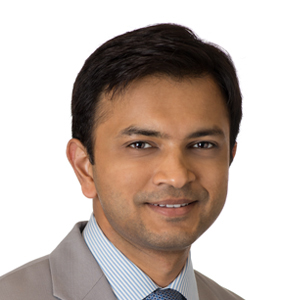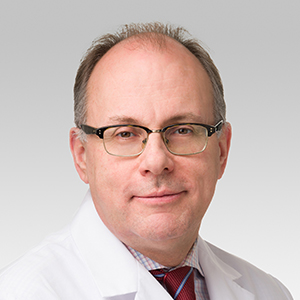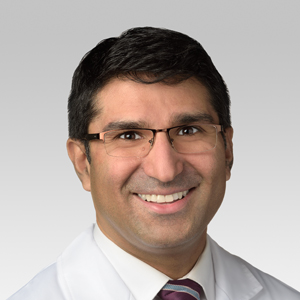First Lung-Liver Transplant Performed at Northwestern Medicine
Retired Nurse Gets Transplant at the Hospital Where He Once Worked
Published December 2022
Born in the Philippines, 63-year-old Patricio Collera, RN, moved to the United States and worked as a nurse at Northwestern Medicine for several years before being diagnosed with interstitial lung disease and nonalcoholic liver disease, which caused scarring of his lungs and liver.
In 2017, Patricio, who lives in Vernon Hills, Illinois, developed a terrible cough. By 2019, his breathing was so bad that he relied on supportive oxygen and had to stop working as a nurse.
“My life was miserable. I had to drag 50 feet of tubing and oxygen tanks with me everywhere I went. One tank would only last 30 minutes, so I’d have to bring two tanks with me to the grocery store,” says Patricio.
In February 2022, Patricio was evaluated for a lung transplant and testing showed 75% fibrosis, or scar tissue formation, in his liver. Since the liver is the filtration system of the body, this meant that Patricio would also need a liver transplant to withstand the transplant medications he’d be on for the rest of his life.
‘Yes — we can do it.’
A lung-liver transplant procedure is very rare.— Rade Tomic, MD
Patricio did his research and found a team who could do what other health systems said they couldn’t.
“I immediately sent messages across the country to top-tier transplant centers and was informed that a lung-liver transplant wasn’t possible due to my age or their team’s lack of experience. One doctor told me, ‘Don’t do it — you’re going to die,’” says Patricio. “But when I turned to Northwestern Medicine, I started crying tears of relief when they said, ‘Yes — we can do it.’”
Patricio was listed for a double-lung and liver transplant on August 15, 2022. Ten days later, he received the call that a single-lung and liver were available. Even though he was listed for a double-lung transplant, the team encouraged him to take the organs.
“A lung-liver transplant procedure is very rare. To date in the United States, only ten have been performed in 2022, ” says Rade Tomic, MD, pulmonologist and medical director of the Northwestern Medicine Lung Transplant Program. “Patricio was in desperate need of a lung, and we didn’t have much time to keep waiting for a double-lung transplant. The outcomes of a single-lung transplant versus a double-lung transplant are very similar, so we decided to proceed with one lung because it was an excellent match.”
‘It’s an elegant and closely coordinated dance.’
Once Patricio was in the operating room, his surgical team had to work swiftly and carefully.
“With two different organs, you have to work twice as fast. You can’t start the second transplant until the first is completed and perfect. There’s zero margin of error. Many people are working closely to make this a success: lung team, liver team, anesthesiologists, nurses, perfusionists, donor team, etc. It’s an elegant and closely coordinated dance,” says Ankit Bharat, MD, chief of Thoracic Surgery at Northwestern Medicine Canning Thoracic Institute. “Patricio’s lung transplant was the fastest one I’ve ever done in my career, and the new lung is working great. In fact, his old left lung, new right lung and new liver are all very happy together. ”
Patricio’s liver transplant surgeon, Satish Nadig, MD, PhD, chief of Organ Transplantation at Northwestern Medicine, says lung-liver transplants are “the ultimate team sport” with rewarding outcomes.
“It’s not only amazing to be able to replace someone’s lung and liver and they go on to live a normal life, but to also know we’re honoring the gift that someone has given up themselves,” says Dr. Nadig.
Patricio’s Lung-Liver Legacy
As the first-ever combined lung-liver transplant recipient at Northwestern Medicine, Patricio is now on a mission to share his story and bring hope to other patients.
“Without my transplant team and donor, I wouldn’t be here today,” said Collera. “Being the first Northwestern Medicine patient to successfully receive a combined lung-liver transplant will be my legacy, and it’s even more special receiving my new organs at the same place where I once worked as a nurse.”









